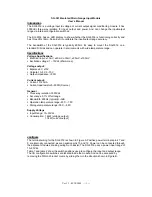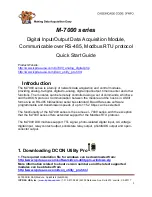
36
Rockwell Automation Publication 1790-UM001B-EN-P - April 2021
Chapter 4 Module Data, Status, and Channel Configuration for Analog Output Modules
Output Fault and Idle States
Analog output fault (communication failure) and idle (processor in program
mode) state can be defined for each output. Both fault state and idle state can
have the behavior that is defined in
for each output.
The user-specified value is entered in raw/proportional notation. For example:
•
0 is the low clamp. This value equals 0 mA or oV DC.
•
4095 is the high clamp. This value equals 20 mA or 10V DC.
•
Values from 0 to 4095 denote proportional values. 2048 equals 10 mA or
5V DC.
The values in the output data file are retained. Once a fault or idle condition is
cleared, the retained output values are sent to the analog output channels.
Configure the Analog Output
Module
RSNetWorx allows you to identify the network and configure the I/O modules
with easy-to-use Electronic Data Sheets (EDS).
To download EDS files for use in configuration, go to
.
EDS files for blocks with matching catalog numbers (for D-shell and
removable terminal block versions) are the same. The website, or in
RSNetWorx for DeviceNet, there may be only one catalog number that is listed
for both versions.
When using third-party configuration software, load the EDS files into the
software and follow the vendor’s instructions.
Configure Analog Modules
with RSNetWorx
To configure analog modules, follow these steps:
1. Open RSNetWorx for DeviceNet.
2. Add an analog output module (for example, 1790D-N0C2) to the network,
as shown.
Table 31 - Output Fault/Idle State
Behavior
1790D-N0C2, 1790D-TN0C2
1790D-TN0V2
Go to low clamp
0 mA
0V DC
Go to high clamp
20 mA
10V DC
Go to fault/idle value
User configurable
User configurable
Hold last state
Hold last value
Hold last value
















































